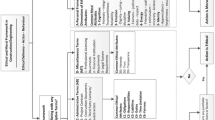Abstract
This paper starts from the presupposition that moral codes often do not suffice to make agents understand their moral responsibility. We will illustrate this statement with a concrete example of engineers who design a truck’s trailer and who do not think traffic safety is part of their responsibility. This opinion clashes with a common supposition that designers in fact should do all that is in their power to ensure safety in traffic. In our opinion this shows the need for a moral philosophy that helps engineers to interpret their responsibility and think more critically about it. For this purpose we will explore the moral philosophy of Alasdair MacIntyre, which is particularly interesting because he locates the beginning of moral thinking in the daily practice of a profession. This is consistent with the history of moral codes, for codes are also the product of moral reflection by professionals. We will use MacIntyre’s philosophy to (1) explain what is wrong with the designers’ understanding of their responsibility and (2) show a possible way to bring their reflection to a more self-critical level. We will also inspect MacIntyre’s proposal critically.
Similar content being viewed by others
References
www.krone.de.
Central Bureau of Statistics and SWOV, www.swov.nl.
see www.dodehoek.nl and European Directive 2003/97/EG accessible http://europa.eu.int/eurlex/en/index.html.
Davis, M. (1998) Thinking Like an Engineer: Studies in the Ethics of a Profession, Oxford University Press, New York and Oxford.
Didier, C. (2000) Engineering ethics at the Catholic university of Lille (France): research and teaching in a European context. European Journal of Engineering Education 25(4): 325–335.
See http://www.bouwenmetstaal.nl/.
MacIntyre, A.C. (1981), After Virtue. University of Notre Dame Press, Notre Dame.
A. van Gorp, Ethical issues in engineering design. This thesis will appear July 2005. The trailer case described in this article is one of four cases from this thesis.
See www.cur.nl.
www.ieee.org.
www.abet.org.
www.onlineethics.org.
www.lockheedmartin.com, www.bp.com, www.whirlpool.com, www.dow.com.
Frazer, E. and Lacey, N. (1994) MacIntyre, Feminism and the concept of practice. in: Horton, J. and Mendus S. eds. After MacIntyre; Critical Perspectives on the Work of Alasdair MacIntyre. Polity Press, Cambridge and Oxford.
Taylor, Ch. (1994) Justice after virtue in: Horton, J. and Mendus S. eds. After MacIntyre; Critical Perspectives on the Work of Alasdair MacIntyre. Polity Press, Cambridge and Oxford.
MacIntyre, A.C. (1994) in: Horton, J. and Mendus S. eds. After MacIntyre; critical perspectives on the work of Alasdair. Polity Press, Cambridge Oxford p.286–290
Williams, B. (1985) Ethics and the Limits of Philosophy. Harvard University Press, Cambridge Mass.
MacIntyre, A.C. (1990) Three Rival Versions of Moral Enquiry: Encyclopedia, Geneology and Tradition. Duckworth, London.
MacIntyre, A.C. (1999) Dependent Rational Animals: Why Human Beings Need the Virtues. Duckworth, London.
Author information
Authors and Affiliations
Corresponding author
Rights and permissions
About this article
Cite this article
van der Burg, S., van Gorp, A. Understanding moral responsibility in the design of trailers. SCI ENG ETHICS 11, 235–256 (2005). https://doi.org/10.1007/s11948-005-0044-x
Received:
Revised:
Accepted:
Issue Date:
DOI: https://doi.org/10.1007/s11948-005-0044-x




